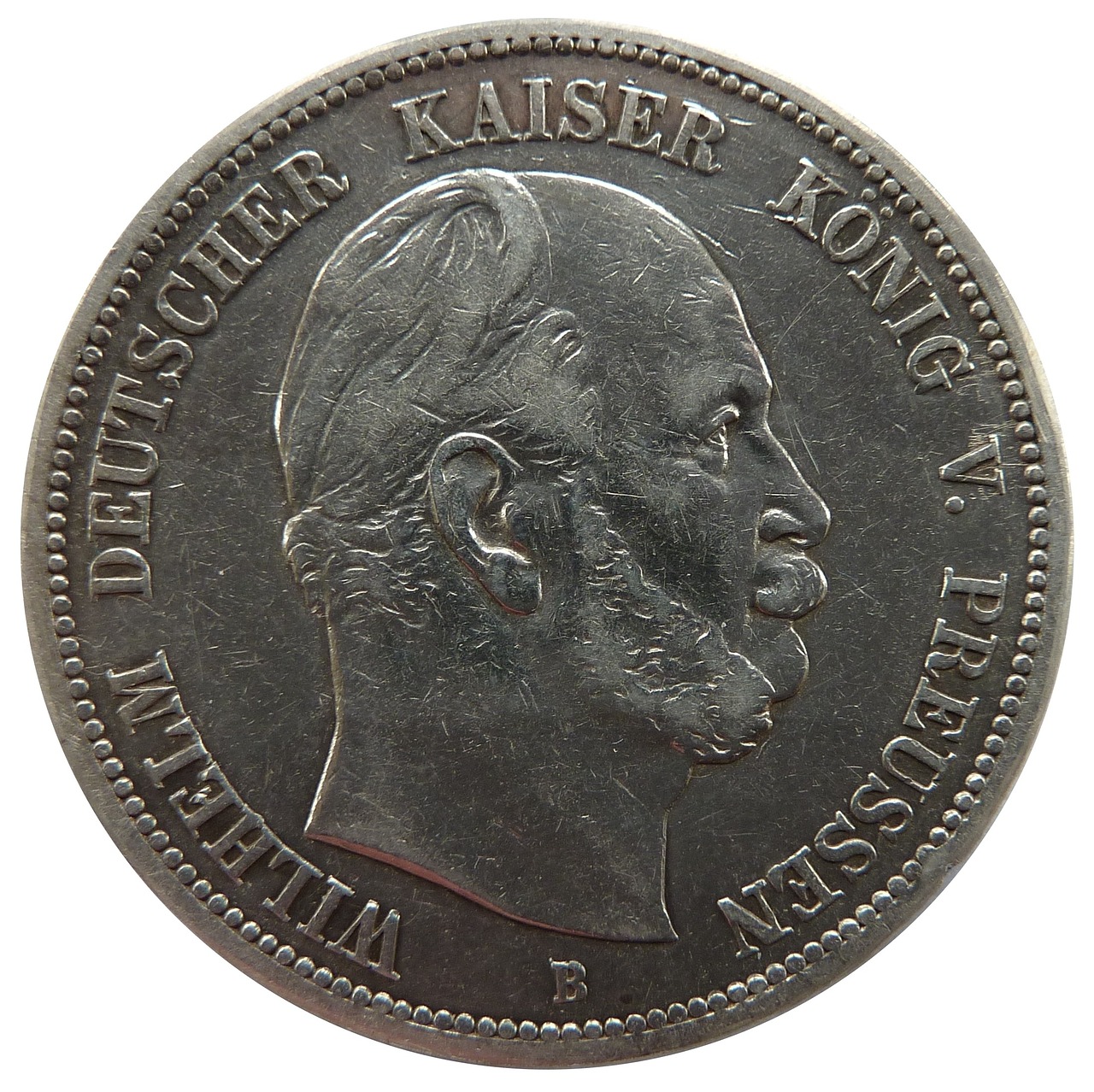Understanding the Effect of Historical Events on Market Behavior
Throughout history, significant events have acted as catalysts, shaping the landscape of financial markets and influencing investor behavior. From economic downturns to global conflicts, these occurrences do not merely serve as footnotes in history; they are pivotal moments that echo through time, impacting how markets function today. Have you ever wondered how a single event can ripple through the economy, altering investor sentiment and market dynamics? This article dives deep into the intricate relationship between historical events and market behavior, revealing the lessons learned and how they continue to shape our financial world.
Consider the Great Depression, which stands as one of the most significant economic calamities in history. It was not just a moment of crisis but a transformative period that led to extensive regulatory changes and a fundamental shift in how investors approached the market. The psychological scars left by such events linger, influencing decisions long after the dust has settled. Similarly, World War II acted as a catalyst for economic recovery in various nations, leading to technological advancements and a redefined global market structure. Understanding these historical contexts allows us to grasp the complexities of today’s market behavior, where investor reactions can often be traced back to past experiences.
As we navigate through the decades, each significant event—from the post-war economic boom to the oil crises of the 1970s—adds layers to our understanding of market dynamics. The post-war era, for instance, was marked by a surge in consumer spending, fundamentally altering market behavior and laying the groundwork for the consumer-driven economy we know today. This period saw a shift not only in spending habits but also in investment strategies, as technology began to take center stage, reshaping industries and creating new market leaders.
Fast forward to the late 1990s, and we encounter the dot-com bubble, a classic example of how speculation can distort market behavior. The exuberance surrounding technology stocks led to inflated valuations, and when reality set in, it resulted in a dramatic market correction. The lessons learned from this era are invaluable, emphasizing the necessity for due diligence and a solid understanding of market fundamentals. As we dissect these historical events, it becomes clear that the effects are not isolated; they intertwine, creating a complex web that influences current market evaluations and investor confidence.
Finally, we arrive at the 2008 financial crisis, a watershed moment that highlighted the interconnectedness of global economies. This crisis not only reshaped market structures but also transformed investor behavior, leading to a more cautious approach to risk-taking. The regulatory reforms that followed aimed to safeguard against future crises, ensuring that lessons from the past would not be forgotten. Today, as we analyze market trends and investor strategies, we must keep these historical events in mind, recognizing their profound impact on our financial landscape.
- What is the significance of historical events in shaping market behavior?
Historical events provide context and insight into investor psychology, helping us understand current market trends and behaviors. - How can understanding past market behaviors help investors today?
Learning from past events allows investors to make informed decisions, avoiding the pitfalls of speculation and market overreactions. - What role do government regulations play following major economic events?
Regulations are often introduced to protect investors and stabilize markets, reflecting lessons learned from previous crises.

The Great Depression
The Great Depression, which began in 1929 and lasted through the late 1930s, was not just a fleeting economic downturn; it was a seismic event that reshaped the very fabric of financial systems worldwide. Imagine waking up one day to find that the stock market, which was once a symbol of prosperity and growth, had plummeted, leaving millions in despair. This catastrophic event led to unprecedented levels of unemployment, with rates soaring to nearly 25% in the United States. The ripple effects were felt globally, as economies that were once thriving crumbled under the weight of financial instability.
During this tumultuous time, banks failed at an alarming rate, erasing the savings of countless individuals. The phrase "bank run" became a part of the everyday lexicon, as people rushed to withdraw their money, fearing that their financial institutions would collapse. The Great Depression forced governments to rethink their roles in the economy, leading to the establishment of various regulatory frameworks aimed at preventing such disasters in the future. For instance, the Glass-Steagall Act of 1933 was introduced to separate commercial banking from investment banking, a move designed to stabilize the financial system.
Moreover, the psychological impact of the Great Depression on investors was profound. Many lost their life savings and became wary of the stock market, associating it with loss rather than opportunity. This shift in investor sentiment has had lasting implications, contributing to a culture of risk aversion that persists in various forms to this day. The memory of those dark days still lingers, serving as a cautionary tale for both investors and policymakers alike.
To illustrate the significance of the Great Depression, consider the following table, which outlines key economic indicators before, during, and after the crisis:
| Year | Unemployment Rate (%) | Stock Market Index (Dow Jones) |
|---|---|---|
| 1929 | 3.2 | 381.17 |
| 1933 | 25.0 | 99.93 |
| 1939 | 17.2 | 152.69 |
| 1945 | 1.9 | 192.81 |
The data clearly highlights the dramatic shifts in the economy during this period. The stock market's recovery post-Depression was slow, but it eventually laid the groundwork for future economic booms. The Great Depression not only changed how markets functioned but also influenced economic policies that shaped modern capitalism.
In conclusion, the Great Depression was a defining moment in economic history that taught us invaluable lessons about market behavior, investor psychology, and the necessity of regulation. Its legacy continues to inform current financial practices, reminding us that while the markets may fluctuate, the lessons learned from this era remain relevant. As we navigate today's complex financial landscape, we must keep in mind the shadows of the past, ensuring that history does not repeat itself.
- What caused the Great Depression? The Great Depression was primarily caused by the stock market crash of 1929, but it was exacerbated by bank failures, reduced consumer spending, and poor economic policies.
- How did the Great Depression affect everyday people? Millions lost their jobs and savings, leading to widespread poverty and hardship. Families struggled to make ends meet, and many were forced to rely on soup kitchens and government aid.
- What were the long-term effects of the Great Depression? The Great Depression led to significant changes in economic policy, including increased government intervention in the economy, the establishment of social safety nets, and regulations that still influence financial markets today.

World War II and Economic Recovery
The aftermath of World War II marked a significant turning point in global economics, as nations scrambled to rebuild and revitalize their economies. The war had devastated many countries, but it also set the stage for unprecedented growth and innovation. As factories transitioned from producing war materials to consumer goods, the economic landscape began to shift dramatically. This transformation was not merely a return to pre-war conditions; it was a leap into a new era of industrialization and consumerism.
One of the most notable aspects of this period was the surge in production capabilities. Nations like the United States experienced a boom in manufacturing as they repurposed their wartime industries. This led to a significant increase in job opportunities, which in turn fueled consumer spending. The influx of disposable income allowed families to purchase products that had once been scarce. The pent-up demand from years of rationing and scarcity ignited a consumer revolution, changing the dynamics of the market forever.
Moreover, the economic recovery was not uniform across all nations. Some countries, particularly in Europe, faced immense challenges in rebuilding their infrastructure and economies. The Marshall Plan, initiated by the United States, played a crucial role in providing financial aid to war-torn nations, helping them to stabilize their economies and restore their industrial bases. This assistance not only fostered economic recovery but also strengthened political alliances, laying the groundwork for future cooperation in international markets.
During this period, several key trends emerged that would shape market behavior for decades to come:
- Technological Advancements: The war had accelerated technological innovations, and many of these advancements found their way into civilian applications. Industries such as aerospace, electronics, and pharmaceuticals saw significant growth, which in turn influenced investment strategies.
- Consumer Culture: The post-war boom led to the rise of a consumer-oriented society. People began to prioritize spending on goods and services, which transformed how businesses operated. Marketing strategies became more sophisticated, catering to the desires of a burgeoning middle class.
- Investment in Infrastructure: Governments recognized the need for robust infrastructure to support economic growth. Investments in transportation, communication, and energy sectors created a ripple effect, stimulating further economic activity and attracting private investments.
This period of recovery also set the stage for the emergence of new economic policies and theories. Economists began to explore the concepts of Keynesian economics, advocating for government intervention to manage economic cycles. This approach emphasized the importance of fiscal policy in stimulating demand and mitigating recessions, a lesson that continues to resonate in today’s economic discussions.
In summary, the economic recovery following World War II was a complex interplay of innovation, consumer demand, and government policy. The effects of this transformative period are still evident in today’s market dynamics, as we navigate an economy that is deeply influenced by the lessons learned from that era. Understanding these historical contexts not only enriches our knowledge but also equips us to make informed decisions in our investment strategies.
Q: How did World War II impact global trade?
A: The war disrupted traditional trade routes and relationships, leading to a reconfiguration of global trade networks. Post-war recovery efforts, like the Marshall Plan, helped to reintegrate economies and promote international trade.
Q: What role did technology play in the economic recovery after World War II?
A: Technological advancements accelerated during the war and continued to evolve in the post-war period, leading to increased productivity and the emergence of new industries, significantly impacting market behavior.
Q: How did consumer behavior change after World War II?
A: The post-war era saw a shift towards consumerism, with increased disposable income and a focus on purchasing goods and services, which transformed market dynamics and business strategies.

The Post-War Boom
The Post-War Boom was an extraordinary period in history that followed the end of World War II, marked by an explosion of economic growth and consumer prosperity. Imagine a world where the shackles of war have finally been lifted, and nations are ready to rebuild and innovate. This era brought about a surge in consumer demand, fueled by a sense of optimism and the need to return to normalcy. People were eager to spend, invest, and enjoy the fruits of peace, leading to unprecedented growth in various sectors.
During this time, the economy was like a coiled spring that had finally been released. The pent-up demand from consumers who had been rationing during the war led to a boom in manufacturing and services. Factories that had produced munitions and military supplies shifted gears to create household goods, automobiles, and appliances. This transition was not just a shift in production; it was a transformation of society itself. The rise of the middle class became a defining feature of the post-war landscape, as more people than ever could afford cars, televisions, and homes.
In addition to consumer goods, the Post-War Boom also witnessed significant advancements in technology. Many innovations that emerged during the war found their way into civilian applications. For instance, the development of radar technology and advancements in aviation not only changed the way people traveled but also laid the groundwork for the aerospace industry. The resulting technological advancements created new industries and job opportunities, further driving economic growth.
One of the most notable aspects of this economic expansion was the shift in consumer spending trends. As disposable incomes rose, so did the appetite for luxury items and services. The retail sector flourished, with shopping becoming a favorite pastime for many families. This period saw the rise of shopping malls and advertising as powerful forces that shaped consumer behavior. Businesses began to understand the importance of marketing, leading to a more strategic approach to reaching potential customers.
However, it wasn't all smooth sailing. The rapid growth also brought challenges, such as inflation and labor strikes, as workers demanded better wages and conditions. Yet, these hurdles were often met with innovative solutions and negotiations that further strengthened labor rights and economic policies.
In summary, the Post-War Boom was not just an economic phenomenon; it was a cultural revolution. It redefined consumerism, influenced investment strategies, and set the stage for future economic cycles. The impacts of this era are still felt today, as the foundations of modern consumer behavior and market dynamics were laid during this vibrant period of history.
- What caused the Post-War Boom?
The Post-War Boom was primarily driven by pent-up consumer demand, increased production capabilities, and technological advancements following World War II. - How did the Post-War Boom affect consumer behavior?
Consumers began to spend more freely on goods and services, leading to the rise of retail sectors and consumer-driven economies. - What were some significant changes during the Post-War Boom?
Significant changes included the rise of the middle class, advancements in technology, and the emergence of shopping as a cultural phenomenon. - Are there lessons from the Post-War Boom that apply today?
Yes, understanding the economic and consumer trends from the Post-War Boom can help investors and businesses navigate current market dynamics effectively.

Consumer Spending Trends
Consumer spending trends during the post-war era were nothing short of revolutionary. After the turmoil of World War II, people were eager to spend their hard-earned money, leading to a surge in demand for goods and services that had been scarce during the war. This newfound economic freedom transformed the landscape of the marketplace, creating a vibrant environment where businesses flourished and competition thrived. The shift from wartime rationing to consumer abundance was akin to a dam bursting; the flood of spending not only boosted the economy but also set the stage for modern consumerism.
As households began to invest in everything from automobiles to appliances, the focus of the economy shifted dramatically. The rise of the middle class played a pivotal role in this transformation, as families sought to improve their living standards. This period saw the emergence of iconic brands and the birth of advertising as a powerful tool to influence consumer behavior. Companies began to understand that appealing to emotions could drive sales, and they crafted marketing strategies that resonated deeply with the desires of the public.
Moreover, the introduction of credit systems allowed consumers to purchase items they might not have been able to afford outright. This credit revolution meant that spending was no longer limited to immediate cash availability, creating a culture of consumption that has persisted to this day. For example, the ability to buy now and pay later has become a staple of modern consumer behavior, influencing everything from shopping habits to investment strategies.
To illustrate the impact of these trends, consider the following table that highlights key consumer spending categories during the post-war boom:
| Year | Automobile Sales | Appliance Purchases | Retail Growth (%) |
|---|---|---|---|
| 1945 | 0.5 million | 200,000 | 5% |
| 1950 | 1.2 million | 600,000 | 10% |
| 1960 | 4 million | 2 million | 15% |
These figures demonstrate a clear upward trend in consumer spending, reflecting the growing confidence of the public in their economic situation. As people spent more, businesses expanded, and the economy entered a phase of unprecedented growth, laying the groundwork for the consumer-driven economy we experience today.
In conclusion, understanding consumer spending trends from the post-war era is crucial for grasping how market behavior has evolved. The significant increase in consumer demand not only reshaped industries but also influenced the way businesses operate. As we continue to navigate through economic changes, the lessons learned from this era remain relevant, reminding us of the profound impact that consumer behavior has on market dynamics.
- What caused the surge in consumer spending after World War II?
The surge was driven by a combination of increased disposable income, the emergence of the middle class, and the availability of consumer credit.
- How did advertising influence consumer behavior during this time?
Advertising became a powerful tool that appealed to emotions and desires, encouraging consumers to spend on goods and services.
- What long-term effects did post-war consumer spending have on the economy?
The increase in consumer spending laid the foundation for modern consumerism, influencing business strategies and economic policies for decades to come.

Investment in Technology
Investment in technology surged dramatically in the aftermath of World War II, marking a significant turning point in the global economy. This era was not just about rebuilding; it was about revolutionizing how industries operated. As nations sought to restore their economies, they recognized that technological advancements could serve as a catalyst for growth. The result? A frenzy of innovation that would lay the foundation for modern market behavior.
During this period, companies began to pour resources into research and development like never before. This was akin to planting seeds in fertile soil; the potential for growth was immense. Industries such as electronics, telecommunications, and automotive saw exponential advancements, leading to the creation of products that would change consumer habits and market dynamics forever. For instance, the introduction of household appliances transformed daily life and created new consumer demands, reshaping the retail landscape.
Moreover, this surge in technology investment wasn't just limited to products; it also encompassed processes. Companies adopted new manufacturing techniques that increased efficiency and reduced costs. This shift not only boosted profitability but also made products more accessible to a broader audience. As a result, consumer spending skyrocketed, further fueling market growth.
To illustrate the impact of technology investments, consider the following table that highlights key technological advancements and their economic implications:
| Technological Advancement | Impact on Market | Year Introduced |
|---|---|---|
| Transistor | Enabled miniaturization of electronics | 1947 |
| Integrated Circuit | Laid the groundwork for modern computing | 1958 |
| Personal Computer | Transformed home and office productivity | 1970s |
| Internet | Revolutionized communication and commerce | 1990s |
As we look back, it becomes clear that the investment in technology not only fostered innovation but also created a ripple effect throughout various sectors. The tech boom of the late 20th century set the stage for the digital age we live in today. Companies that embraced technological advancements quickly became leaders in their fields, while those that hesitated often found themselves struggling to keep up. This dynamic illustrates a fundamental truth about markets: adaptation and innovation are key to survival.
In essence, the post-war investment in technology has not only shaped the current economic landscape but has also influenced consumer behavior and expectations. Today, we see technology as an integral part of our daily lives, driving everything from shopping habits to investment strategies. As we move forward, it’s crucial for investors to keep an eye on technological trends, as they will undoubtedly continue to influence market behavior in profound ways.
- How did technology investments affect consumer behavior?
Technology investments led to the creation of innovative products that significantly changed consumer habits, making products more accessible and enhancing overall convenience in daily life. - What role did the internet play in market dynamics?
The internet revolutionized communication and commerce, enabling businesses to reach wider audiences and changing how consumers interact with brands. - Why is it important for investors to focus on technology trends?
Understanding technology trends helps investors identify potential growth sectors and make informed decisions, as technology continues to drive market behavior and economic changes.

Oil Crises of the 1970s
The stand as a striking reminder of how external shocks can ripple through the economy, creating waves of volatility that affect market behavior. This tumultuous period was characterized by two major oil shocks: the first in 1973, following the Yom Kippur War, and the second in 1979, triggered by the Iranian Revolution. These events not only led to skyrocketing oil prices but also caused widespread inflation and economic recession across the globe.
During the first crisis, the Organization of Arab Petroleum Exporting Countries (OAPEC) proclaimed an oil embargo against nations supporting Israel, which included the United States. This self-imposed restriction on oil exports resulted in a dramatic increase in oil prices, nearly quadrupling them in a matter of months. The impact was immediate: gas lines formed at filling stations, and consumers faced the reality of soaring prices for everyday goods. It was as if the world had suddenly hit a brick wall, forcing both consumers and businesses to rethink their spending habits and investment strategies.
In the aftermath of the crises, several key changes occurred in market dynamics:
- Increased Inflation: The soaring oil prices contributed to a period of stagflation, where inflation rates soared while economic growth stagnated. This was a perplexing situation that challenged traditional economic theories.
- Shift to Alternative Energy: The crises sparked a surge in interest towards alternative energy sources, prompting governments and companies to invest in research and development.
- Policy Changes: Governments began to rethink their energy policies, leading to the establishment of strategic petroleum reserves and new regulations aimed at reducing dependency on foreign oil.
The second oil crisis in 1979 was even more dramatic, as the Iranian Revolution led to a significant drop in oil production. This further exacerbated the already tense situation, leading to even higher prices and greater economic instability. The world was learning the hard way that oil was not just a commodity; it was a strategic asset that could be wielded with profound effects on global markets.
To illustrate the impact of these crises, consider the following table, which highlights the dramatic changes in oil prices during this tumultuous decade:
| Year | Average Oil Price (USD per barrel) | Event |
|---|---|---|
| 1973 | $3.00 | First Oil Crisis Begins |
| 1974 | $11.65 | Embargo Effects Peak |
| 1979 | $39.50 | Second Oil Crisis Begins |
These crises not only reshaped the economic landscape of the 1970s but also left a lasting legacy on market behavior. Investors became acutely aware of the geopolitical risks associated with oil dependency, leading to a more cautious approach in their investment strategies. The lessons learned from this period continue to resonate today, as we navigate an increasingly complex and interconnected global economy.

The Dot-Com Bubble
The dot-com bubble of the late 1990s stands as a fascinating chapter in the history of financial markets, illustrating how the excitement surrounding emerging technologies can lead to irrational exuberance. As the internet began to revolutionize the way we communicate, shop, and conduct business, investors rushed to pour their money into tech startups, often without a solid understanding of their underlying business models. This led to a frenzy of speculative investments, where companies with little to no profits saw their valuations skyrocket based solely on the promise of future growth. It was a classic case of the greater fool theory, where investors believed they could sell their stocks to someone else at an even higher price, regardless of the company's actual performance.
During this period, the stock market saw unprecedented growth, with the Nasdaq Composite Index soaring from around 1,000 points in 1995 to a staggering 5,000 points by March 2000. However, this meteoric rise was unsustainable. Many dot-com companies were not generating profits, and their business models were often untested. When reality set in, and investors started to question the viability of these enterprises, the bubble burst spectacularly. By the end of 2002, the Nasdaq had lost nearly 80% of its value, leaving a trail of financial devastation in its wake. This event serves as a cautionary tale, reminding us of the importance of due diligence and the need to assess the fundamentals of investments rather than getting swept up in hype.
In the aftermath of the dot-com bubble, several lessons emerged that continue to resonate with investors today. Here are some key takeaways:
- Due Diligence is Crucial: Always research and understand the companies you invest in. Look for solid financials and sustainable business models.
- Beware of Hype: Just because something is trending doesn’t mean it’s a sound investment. Stay grounded in reality.
- Diversification Matters: Don’t put all your eggs in one basket. A diversified portfolio can help mitigate risks.
Moreover, the dot-com bubble prompted significant changes in regulatory frameworks. In response to the rampant speculation and subsequent collapse, regulators implemented measures aimed at protecting investors and ensuring greater transparency in financial reporting. The Sarbanes-Oxley Act of 2002, for example, introduced stricter regulations on corporate governance and financial disclosures, making it harder for companies to mislead investors. These reforms have had a lasting impact on how tech companies operate and how investors evaluate potential investments in the sector.
As we look at today’s tech landscape, the echoes of the dot-com bubble still resonate. While the sector has matured, with many companies now boasting robust business models and significant profits, the lessons learned from that period remain relevant. Investors must remain vigilant, ensuring they balance optimism with caution, especially in a market that continues to evolve at lightning speed.

Lessons Learned from Speculation
The dot-com bubble of the late 1990s serves as a vivid reminder of the risks associated with speculative investments. During this period, investors were swept up in a frenzy, pouring money into internet-based companies with little regard for traditional financial metrics. The excitement was palpable, almost like a gold rush, where everyone wanted to strike it rich overnight. But as we know too well, what goes up must come down, and the bubble eventually burst, leaving many investors in financial ruin.
So, what exactly can we learn from this turbulent chapter in market history? First and foremost, it's crucial to conduct due diligence. Investors should thoroughly research any potential investment, looking beyond flashy marketing and hype. This means digging into a company's fundamentals—its earnings, growth potential, and overall business model. In a world where information is abundant, the responsibility falls on the investor to separate fact from fiction.
Moreover, the dot-com bubble teaches us the importance of diversification. Relying heavily on a single sector, especially one as volatile as technology during that time, can lead to devastating losses. By spreading investments across various sectors and asset classes, investors can mitigate risk and protect their portfolios from unexpected downturns. Think of it like a balanced diet; too much of one thing can lead to health issues, while a varied diet promotes overall well-being.
Another critical lesson is the need for emotional discipline. The highs and lows of the market can evoke strong emotions, leading to impulsive decisions. During the dot-com era, many investors succumbed to the fear of missing out (FOMO), leading them to invest without a solid strategy. Staying calm and sticking to a well-thought-out investment plan is essential, especially in times of market volatility. Remember, patience is a virtue, and sometimes the best action is to do nothing at all.
Lastly, the dot-com bubble underscores the significance of regulatory frameworks. The aftermath of the bubble prompted significant changes in regulations to protect investors from similar speculative bubbles in the future. Understanding the evolving landscape of regulations can provide investors with a clearer picture of market dynamics and help them make informed decisions. The regulations established post-bubble have been instrumental in shaping today's investment environment, emphasizing transparency and accountability.
In summary, the lessons learned from the dot-com bubble are invaluable for today's investors. By conducting thorough research, diversifying portfolios, maintaining emotional discipline, and understanding regulatory changes, investors can navigate the complexities of the modern market with greater confidence. The past may offer a cautionary tale, but it also provides a roadmap for smarter investment strategies moving forward.
- What was the dot-com bubble? The dot-com bubble refers to a period in the late 1990s when internet-based companies saw their stock prices soar due to speculative investments, ultimately leading to a market crash in 2000.
- What are the key lessons from the dot-com bubble? Key lessons include the importance of due diligence, diversification, emotional discipline, and understanding regulatory frameworks.
- How can I protect myself from market speculation? Conduct thorough research, diversify your investments, maintain a long-term perspective, and stay informed about market regulations.
- Why is emotional discipline important in investing? Emotional discipline helps investors avoid impulsive decisions driven by fear or excitement, leading to more rational and strategic investment choices.

Impact on Regulatory Frameworks
The aftermath of the dot-com bubble in the early 2000s was like a wake-up call for investors and regulators alike. It revealed the vulnerabilities within financial markets and underscored the need for robust regulatory frameworks to protect investors from the perils of speculation and market manipulation. As we look back, it’s clear that the lessons learned from this tumultuous period have shaped the regulatory landscape we see today.
One of the most significant changes was the introduction of the Sarbanes-Oxley Act in 2002, which aimed to enhance corporate governance and accountability. This legislation was a direct response to the accounting scandals that became rampant during the bubble, with companies like Enron and WorldCom being at the forefront. The act mandated stricter financial disclosures, increased penalties for fraudulent financial activity, and required top management to personally certify the accuracy of financial information. This shift not only restored some level of trust in the markets but also imposed a new level of scrutiny on corporate practices.
Furthermore, the dot-com bubble prompted the SEC (Securities and Exchange Commission) to revise its approach to regulatory oversight. The SEC began to focus more on transparency and investor education, recognizing that informed investors are less likely to fall prey to market hype and speculation. Initiatives were launched to improve the quality of financial reporting and to ensure that investors had access to reliable information when making investment decisions.
In addition to these regulatory changes, the dot-com era also influenced how technology companies are evaluated and monitored. The rise of online trading platforms and the rapid expansion of technology stocks led to the need for new guidelines that addressed the unique characteristics of the tech industry. Regulators now pay closer attention to the valuation methods used in tech investments, ensuring that investors are not misled by inflated projections and unrealistic growth expectations.
To summarize, the impact of the dot-com bubble on regulatory frameworks can be encapsulated in the following key areas:
- Enhanced Corporate Governance: Stricter rules to ensure transparency and accountability in corporate practices.
- Focus on Investor Protection: Increased emphasis on educating investors and providing them with accurate information.
- Adaptation to Technological Changes: New guidelines to better assess and regulate technology companies and their market behaviors.
These changes have not only shaped the current market landscape but have also instilled a sense of caution among investors. The lessons learned from the dot-com bubble serve as a reminder that while markets can be exciting and full of potential, they can also be perilous if not navigated with care. As we continue to witness the evolution of market dynamics, it’s essential for both investors and regulators to remain vigilant and adaptable to ensure a stable and fair trading environment.
- What was the dot-com bubble?
The dot-com bubble was a period in the late 1990s and early 2000s characterized by excessive speculation in internet-based companies, leading to inflated stock prices and a subsequent market crash. - How did the dot-com bubble affect regulations?
The bubble led to significant regulatory reforms, including the Sarbanes-Oxley Act, aimed at enhancing corporate governance and protecting investors. - What are the key lessons from the dot-com bubble?
Key lessons include the importance of due diligence, understanding market fundamentals, and the need for transparency in financial reporting. - How do current regulations protect investors?
Current regulations focus on transparency, require accurate financial disclosures, and promote investor education to help individuals make informed decisions.

The 2008 Financial Crisis
The 2008 financial crisis stands as one of the most significant economic downturns in modern history, reshaping the landscape of global finance and altering investor behavior in profound ways. Triggered by the collapse of the housing market in the United States, this crisis was not just a local issue; it sent shockwaves throughout the world, revealing the interconnectedness of global economies. As mortgage-backed securities plummeted in value, financial institutions faced unprecedented losses, leading to a domino effect that resulted in the failure of major banks and a severe liquidity crisis.
One of the most startling aspects of the 2008 crisis was how quickly it escalated. Many investors were caught off guard, as the signs of impending doom were often masked by a booming housing market and rising stock prices. The reality, however, was that many financial products were built on shaky foundations, with subprime mortgages being at the center of the storm. As homeowners began defaulting on their loans, the value of these securities dropped dramatically, leading to a loss of confidence that rippled through the financial system.
In response to the crisis, governments and central banks around the world implemented a series of emergency measures to stabilize their economies. These included lowering interest rates, implementing quantitative easing, and bailing out key financial institutions. For instance, the U.S. government introduced the Troubled Asset Relief Program (TARP), which allocated hundreds of billions of dollars to purchase distressed assets and inject liquidity into the banking system. The goal was to restore trust among investors and prevent a complete financial collapse.
As a result of the crisis, investor behavior underwent a significant transformation. Many individuals became more risk-averse, opting for safer investments and prioritizing long-term stability over short-term gains. This shift was not merely a reaction to the crisis; it represented a fundamental change in how investors approached their portfolios. Instead of chasing high returns, many began to focus on diversification and the importance of understanding market fundamentals.
Moreover, the crisis led to a reevaluation of regulatory frameworks governing financial markets. In its aftermath, a wave of reforms was introduced to enhance transparency and protect investors from future crises. The Dodd-Frank Wall Street Reform and Consumer Protection Act, for example, aimed to prevent excessive risk-taking by financial institutions and established the Consumer Financial Protection Bureau to oversee consumer-related financial products. These regulatory changes continue to shape the market dynamics we see today.
In summary, the 2008 financial crisis was a wake-up call for investors and regulators alike. It highlighted the dangers of speculative investments and the importance of sound risk management practices. As we navigate the complexities of today’s financial landscape, the lessons learned from this crisis remain relevant, reminding us to approach our investments with caution and a deeper understanding of the underlying market forces.
- What caused the 2008 financial crisis? The crisis was primarily caused by the collapse of the housing market, leading to a wave of mortgage defaults and a loss of value in mortgage-backed securities.
- How did governments respond to the crisis? Governments implemented various measures, including financial bailouts, lowering interest rates, and regulatory reforms to stabilize the economy.
- What are the long-term effects of the crisis? The crisis led to increased risk aversion among investors and significant changes in financial regulations aimed at preventing future crises.

Changes in Investor Behavior
The 2008 financial crisis was a watershed moment that fundamentally altered how investors approach the market. Before this crisis, many investors operated under a sense of invincibility, often taking on high levels of risk without fully understanding the potential consequences. However, the fallout from the crisis forced a dramatic shift in mindset. Investors became increasingly cautious, prioritizing long-term stability over short-term gains. This change in behavior can be likened to a ship that, after navigating through a storm, now sails more carefully, always on the lookout for potential hazards ahead.
One of the most significant changes in investor behavior post-crisis was the heightened focus on risk assessment. Investors began to scrutinize their portfolios more rigorously, assessing the underlying fundamentals of their investments. They realized that a sound investment strategy must be rooted in thorough research and an understanding of market dynamics. This shift is evident in the way investors now prioritize diversification, ensuring that their portfolios are not overly exposed to any single asset class or market sector. The importance of due diligence has never been more pronounced, as investors learned that a lack of caution can lead to devastating losses.
Additionally, the crisis ushered in a new era of financial literacy. Many investors took it upon themselves to educate themselves about market mechanisms, investment strategies, and economic indicators. Online resources, webinars, and investment communities flourished, providing platforms for individuals to share knowledge and experiences. This democratization of information has empowered investors, allowing them to make more informed decisions and engage in discussions that were once reserved for seasoned professionals.
Moreover, the crisis also led to a noticeable shift towards ethical investing. With the collapse of major financial institutions, many investors became disillusioned with traditional investment practices that prioritized profit over principles. As a result, socially responsible investing (SRI) and environmental, social, and governance (ESG) criteria gained popularity. Investors began to seek out companies that not only delivered financial returns but also contributed positively to society and the environment. This shift reflects a broader trend of investors wanting their money to align with their values, creating a new paradigm in market behavior.
To illustrate these changes, consider the following table that highlights key shifts in investor behavior before and after the crisis:
| Investor Behavior | Before 2008 Crisis | After 2008 Crisis |
|---|---|---|
| Risk Tolerance | High | Moderate to Low |
| Focus on Fundamentals | Minimal | Significant |
| Financial Literacy | Low | High |
| Ethical Investing | Limited | Growing |
In conclusion, the changes in investor behavior following the 2008 financial crisis are profound and far-reaching. Investors now navigate the market with a more cautious and informed approach, emphasizing risk management, financial education, and ethical considerations. As we look to the future, these changes will likely continue to shape the landscape of investing, ensuring that the lessons learned from the past are not forgotten.
- What caused the changes in investor behavior after the 2008 financial crisis?
The crisis highlighted the risks of speculative investments and the interconnectedness of global markets, prompting investors to adopt a more cautious and informed approach. - How can investors improve their financial literacy?
Investors can enhance their financial literacy by utilizing online resources, attending workshops, and engaging with investment communities to share knowledge. - What is ethical investing?
Ethical investing involves choosing investments based on their environmental, social, and governance (ESG) criteria, aligning financial goals with personal values.

Regulatory Reforms Post-Crisis
The 2008 financial crisis was a wake-up call for regulators and investors alike, revealing the vulnerabilities in the financial system that had been overlooked for years. In response to this seismic event, a wave of regulatory reforms swept across global markets, aiming to restore trust and stability. These reforms were not just knee-jerk reactions; they were comprehensive strategies designed to address the root causes of the crisis and prevent a recurrence.
One of the most significant pieces of legislation to emerge from this period was the Dodd-Frank Wall Street Reform and Consumer Protection Act, enacted in the United States in 2010. This act introduced a plethora of changes, including:
- Increased Transparency: Financial institutions were required to disclose more information about their risk exposures and financial health, making it easier for investors to make informed decisions.
- Consumer Protection: The creation of the Consumer Financial Protection Bureau (CFPB) aimed to safeguard consumers from predatory lending practices and ensure fair treatment.
- Volcker Rule: This provision restricted banks from engaging in proprietary trading, which had contributed to the crisis by encouraging risky behavior.
These reforms were crucial in reshaping the landscape of financial markets. They not only aimed to protect consumers but also to create a more resilient banking system. The idea was to ensure that banks could withstand economic shocks without requiring taxpayer bailouts. This shift in focus has led to a more cautious approach among financial institutions, encouraging them to prioritize long-term stability over short-term profits.
Moreover, international regulatory bodies like the Basel Committee on Banking Supervision also stepped up, introducing the Basel III framework. This set of global regulatory standards aimed to strengthen bank capital requirements and introduce new regulatory requirements on bank liquidity and leverage. By mandating higher capital reserves, Basel III sought to mitigate the risk of bank failures during economic downturns.
In summary, the regulatory reforms post-crisis have significantly influenced market behaviors and investor confidence. These measures have instilled a sense of responsibility among financial institutions, ensuring that they operate within a framework that prioritizes stability and transparency. As we move forward, understanding these reforms is essential for anyone looking to navigate the complexities of today's financial landscape.
- What is the Dodd-Frank Act?
The Dodd-Frank Act is a comprehensive piece of legislation enacted in 2010 aimed at preventing another financial crisis by increasing regulation and oversight of financial institutions. - How did the 2008 financial crisis change investor behavior?
The crisis led to increased risk aversion among investors, with many focusing on long-term stability rather than short-term gains. - What is the Volcker Rule?
The Volcker Rule is a provision of the Dodd-Frank Act that limits the ability of banks to engage in proprietary trading, thereby reducing risky investments. - Why are regulatory reforms important?
Regulatory reforms are crucial for maintaining market stability, protecting consumers, and ensuring that financial institutions operate responsibly.
Frequently Asked Questions
- How did the Great Depression affect market behavior?
The Great Depression had a profound impact on market behavior, leading to significant market crashes and a loss of investor confidence. It resulted in stricter financial regulations aimed at stabilizing the economy and preventing future crises. The memories and lessons from this era continue to influence investor psychology today.
- What role did World War II play in economic recovery?
World War II acted as a catalyst for economic recovery, boosting production and innovation across various sectors. The war effort led to technological advancements and new economic policies that reshaped global markets, fostering a period of growth that set the foundation for modern economic practices.
- What was the post-war boom, and how did it change consumer behavior?
The post-war boom was characterized by increased consumer spending due to pent-up demand and industrial growth. This era marked a shift towards consumerism, significantly impacting market dynamics and leading to a focus on retail and service sectors that continue to thrive today.
- How did the oil crises of the 1970s influence market volatility?
The oil crises of the 1970s caused widespread market volatility, resulting in inflation and economic recession. These events highlighted the sensitivity of markets to geopolitical issues and energy supply, shaping current energy market behaviors and investor strategies.
- What lessons can we learn from the dot-com bubble?
The dot-com bubble teaches us the importance of due diligence and understanding market fundamentals. The speculative frenzy that drove the bubble illustrates how quickly markets can become irrational, serving as a cautionary tale for investors navigating today's tech-driven landscape.
- What impact did the 2008 financial crisis have on investor behavior?
The 2008 financial crisis fundamentally changed investor behavior, leading to increased risk aversion and a preference for long-term stability over short-term gains. This shift has influenced how investors approach their portfolios and assess market opportunities.
- What regulatory reforms were introduced after the 2008 financial crisis?
In the wake of the 2008 financial crisis, significant regulatory reforms were implemented to enhance investor protections and prevent future financial disasters. These reforms have reshaped market behaviors and continue to play a crucial role in maintaining market stability and investor confidence.


















